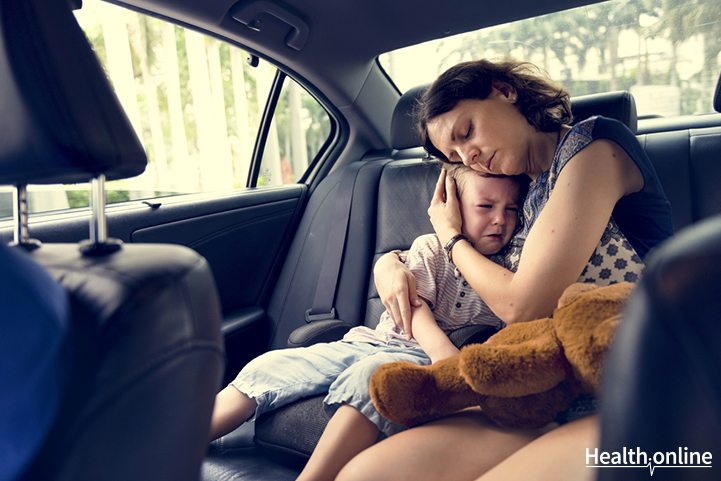
Managing Separation Anxiety in Children
Is your kid gets very anxious when you are not around? And no amount of cajoling is helping? Don’t worry! This is normal. Every kid expresses this anxiety , and every parent faces this. Want to know more about what you’re dealing with? Then read on.
What is separation anxiety?
When your baby is born, it spends most of its time with you. After being cared for round the clock, the baby becomes very attached to you. It is not just an emotional attachment, but also physical attachment, in the form of hugs, etc. So the baby is absolutely dependent on you for everything right from eating, sleeping, etc. Their touch receptors respond to you better. Once the child is able to recognize a smile, they respond well only to someone familiar; and in most cases, this is the mother.The baby creates a world of their own in their brain. A world that is made up of the baby, the mother, and the immediate surroundings. So when there is any alteration, however small, in this world that the baby has created, it becomes anxious. This is known as separation anxiety.
Here are few things that make the kid anxious:
- When the kid misses the mother.
- When it goes to a new place.
- When it encounters strangers.
- When there is any new unusual activity going on around them.
Is separation anxiety normal?
Yes. Separation anxiety is a normal phenomenon. Every child goes through it. An interesting thing to note is that this phenomenon is associative i.e. not only does the child become anxious, but the mother becomes anxious as well. The baby cries, while the mother exhibits this anxiety in the form of frustration.
Separation anxiety is an indication that your child is exploring the world beyond the familiar, and that their cognitive and social awareness is improving. They are developing a better sense of the world. So it is not advisable to avoid it completely. Instead, you can transition into the following phases gradually. So read on to learn the nine steps you need to take in order to manage separation anxiety:
Accept that this is normal
Some over-anxious parents tend to protect their child to the extent that they become over-dependent on their parents. This is not good for the child. The child should become aware of the world, meet new people, experience new feelings, and engage in activities that challenge them. So when your child becomes anxious, do not rush to console them. This will only serve to reinforce that pattern of behavior. So the first step in handling separation anxiety is to accept that is normal, and also a necessary part of the process of making your child grow into a healthy individual. Just keep calm, and follow the remaining steps.
Practice short periods of separation
Leave your child on their own for a short period of time. Make sure that your kid doesn’t see you. Then discreetly observe how long your kid manages without starting to frantically search for you. If your kid is very small, they will start to show anxiety by crying. If your kid is little older, tell your kid that you are going to the kitchen, or stepping outside. Keep watching how your kid reacts. Practice these ‘separation sessions’ for progressively longer durations, and you will find that slowly but surely, your child will get used to your absence.
Help your baby meet new people
Take your kid around to meet new kids in the park or meet new people in the neighbourhood. The child will understand that there is the world beyond your home and lawn. And when the child shows signs of anxiety meeting new people, don’t react by taking your kid away. Rather allow the kid to settle down, and gain the confidence to trust in new people.
Be prepared for bedtime
When you leave kids alone at bedtime, they tend to become more anxious. Explain to your kid that you are around, and you will come when they call you. Be tender and speak softly. Your kid will understand.
Wait for your child to sleep
Your child will have a sound sleep only if well fed. So feed your baby properly, and stay with them till they fall asleep. Don’t leave midway. Let the kid fall asleep in your arms if possible. Then you can place the baby in the crib or bed.
Don’t leave your child alone when sick
There are times when the separation anxiety will be pronounced. Sickness is one such time. Never leave the child alone when they are ill.
Distract your child
Kids become less anxious when they are distracted. Give the kid a favorite game to play. Or allow the kid to settle down with the babysitter, and then you can slowly slip away.
Watch your emotions
Seeing your kid anxious and crying is not a pleasant experience. But reacting immediately with your own anxiety and frustration will be even more disastrous. The child will only get negatively reinforced. If you are anxious, your child will get anxious too. So it is best to keep a check on your negative emotions and feelings.
Spend extra time with your child
When you are leaving your kid with a caregiver or a babysitter for any significant length of time, compensate for it by spending some extra time with them – for instance, by playing with them. This will reassure them that they are important to you, even though they will sometimes be separated from you temporarily.
Follow the aforementioned nine steps carefully, and you’ll soon find that separation anxiety is not something to be feared. Rather it is a natural phenomenon that you can guide your child through as they grow physically and mentally.




